Freestanding electric cookers, despite the popularity of built-in kitchen appliances, are still in demand. They are cheaper, but at the same time they are not inferior to the integrated units in terms of technical characteristics and design. And the installation takes a little time and does not require special preparation.
Correct installation and observance of operating requirements - conditions for a long service life, therefore, homeowners often call a foreman from a service organization or just an acquaintance electrician. But you can save a lot by doing everything yourself. Do you agree?
But what is needed for this and how to do it correctly? We will help you figure out the task at hand - in our article we will describe in detail how to connect the electric stove on our own. We will also analyze the nuances of the choice of wiring and protective equipment, consider the methods of grounding, connection diagrams. This information can be useful to you and not only during the installation of the stove, but also in the future, during the repair or replacement of equipment.
The content of the article:
- Electric stove connection diagrams
- Circuit breaker and wiring requirements
-
Step-by-step connection guide
- Step # 1 - choosing a location
- Step # 2 - calculations and work planning
- Step # 3 - installing a circuit breaker
- Step # 4 - if you need flexible wire
- Step # 5 - connecting wires according to the scheme
- Step # 6 - testing for performance
- Conclusions and useful video on the topic
Electric stove connection diagrams
Let's take a look at the general rules first. An electric stove is a powerful household equipment that consumes 40-50 A of current, therefore a separate electrical circuit is allocated for it. It connects two points: the circuit breaker in the apartment / building electrical panel and the socket / terminal block of the device.
In practice, 3 types of network connection are used:
- traditional way of socket / plug;
- connection of wires in the terminal box in the wall;
- direct terminal connection on the back of the slab.
If the kitchen already has a pre-installed power socketpowered by a separate machine, they usually use it. This is more usual, and if repair is needed, the device can be quickly turned off without leaving the kitchen.
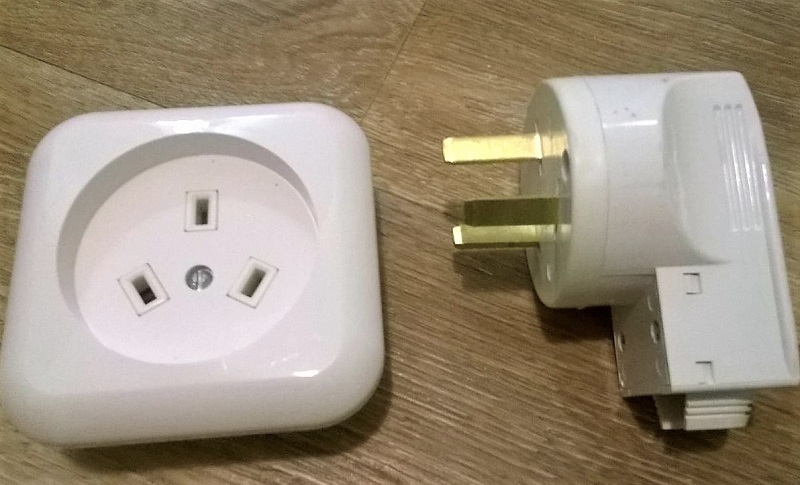
An ordinary socket for connecting an electric stove will not work, as it may not withstand the load. It is necessary to buy a special model suitable for the rated current, withstanding from 7 kW or more
But often a direct terminal connection is used. It is considered safer and more reliable. The disadvantage of a socketless connection is that each time you have to disconnect the stove from the network at the electrical panel.
The connection diagram depends on the number of phases involved. Domestic equipment is designed for 1- or 3-phase connection, but we propose to disassemble all three possible options, including 2-phase.
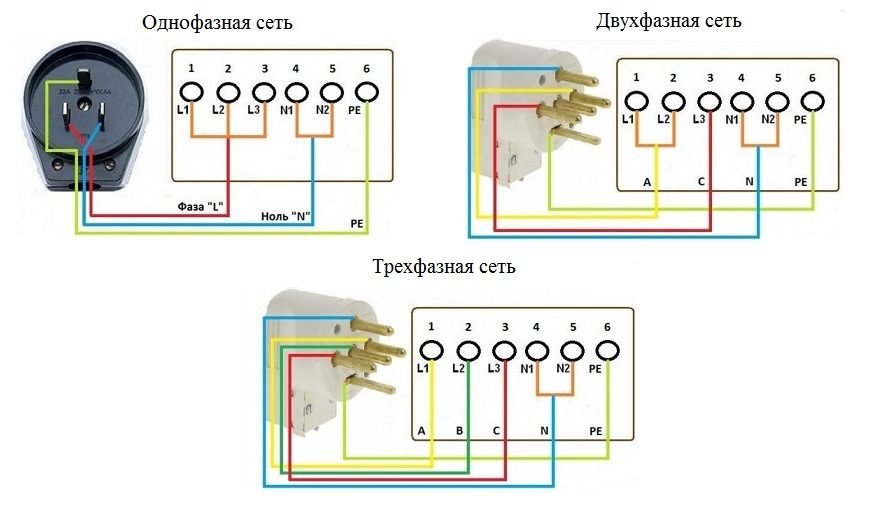
All three connection methods differ in the number of active conductors: 1-phase has 3, 2-phase has 4, and 3-phase has 5. The first option is relevant for high-rise buildings and is used in almost all city apartments, the three-phase is typical for the power supply of private houses
To connect the terminals of the plate with conductors, jumpers made of copper wire are used. Modern technology is usually equipped with the necessary connection parts.
In the single-phase method, the phase is connected to terminals 1, 2 or 3, all of them are interconnected by jumpers. Zero goes to 4 or 5, which are also connected, and ground goes to 6 terminal.
According to the diagram, it is easy to understand how other types of connection are made. There will be no problems with finding circuits - they can be found in the technical documentation for the electric stove or on a plate attached near the terminal block on the back wall.
Circuit breaker and wiring requirements
Before proceeding with the connection, you should find out if the wiring is suitable for the potential load and if a separate circuit breaker is installed in the electrical panel. If there are no elements for installation or they do not fit at face value, we recommend buying them in advance along with the stove.
Powerful electrical appliances not only have a separate line, but also put individual double protection: ideally, this is a set RCD + circuit breaker.
Instead of this pair, to save space in the dashboard, they often use difavtomat.

Installation diagram of protective equipment in the electrical panel. A phase is fed to the outlet through the automation, the neutral wire is pulled through the RCD to the zero bus, and the ground to the common grounding bus
When buying a machine, the decisive criterion is the rating, which is chosen according to the maximum value of the consumed current. Usually it is 40-50 A, but it is better to clarify the technical data in the passport of the stove. We recommend that you familiarize yourself with rules for choosing a machine.
To guarantee safety, the rating is selected in the direction of increase - so when operating at maximum loads, the protection will not constantly work. Suppose that the maximum current consumption is about 45 A, therefore, a 50 A machine is needed.
For selection of RCD the principle is the same - in the direction of increasing, that is, in a pair with a 50 A machine, they put an RCD of 63 A.
WITH choice of wires too, there are no particular difficulties. An aluminum cable is not suitable - it is better not to use it at all for home electrical wiring. This is unsafe, and in terms of characteristics, it is inferior to the copper analog. Therefore, we stop at a copper wire with a cross section corresponding to the power and current consumption.
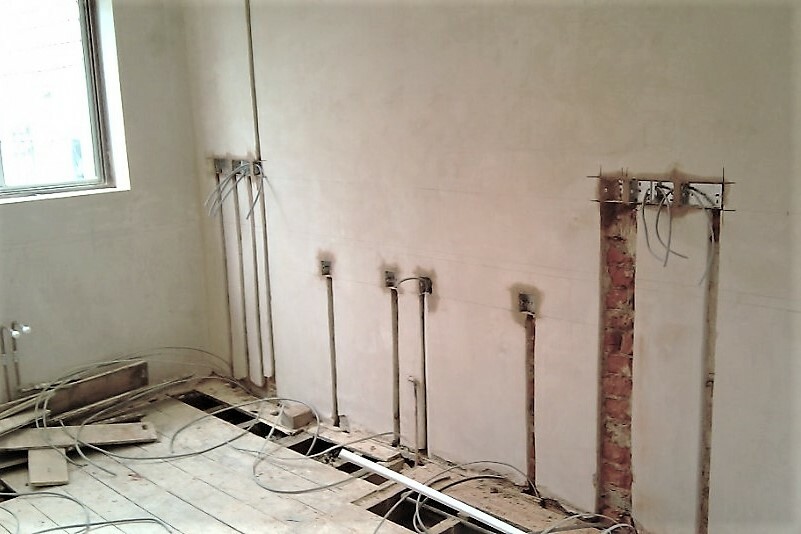
When choosing a wire, the characteristics of the network and the method of wiring are also taken into account. According to modern requirements, new city apartments are initially equipped with wiring that meets all standards. And in old housing, the wiring may have to be changed
If, in the process of preparatory work, you still have to buy wires, you need to focus on the power parameters of the stove:
- 3-5 kW - wire cross-section 2.5 mm²;
- 5-7.5 kW - 4 mm²;
- 7.5-10 kW - 6 mm².
For a three-phase network, a 5-core wire of 2.5 mm² is used.
If you have not yet decided which model of the stove to buy, but have already started to replace the wiring, you can safely buy a wire VVGng 4 mm² - if the distance from the plate to the shield is not more than 12 m, and VVGng 6 mm² - if the electrical panel is located farther. Modern stoves with ovens are powerful enough so you can't go wrong.
And now we will analyze in what order it is better to perform all the actions.
Step-by-step connection guide
The easiest way to install is when everything is ready: the power circuit is brought out to a separate machine, and in the kitchen, in a convenient place, an outlet is installed or wires are prepared for direct connection. Everything complies with the norms and requirements, it remains only to connect the wires according to the scheme.
But in practice, we are faced with other situations: in an old apartment, when installing new powerful equipment, it is often necessary to change all the wiring, in a new home, sockets are inconveniently located. Therefore, we will consider the possible options.
Step # 1 - choosing a location
For the stove, it is necessary to choose a site for "permanent residence", since you are unlikely to move it to another place. This is usually solved in the process of ordering or buying a kitchen set.
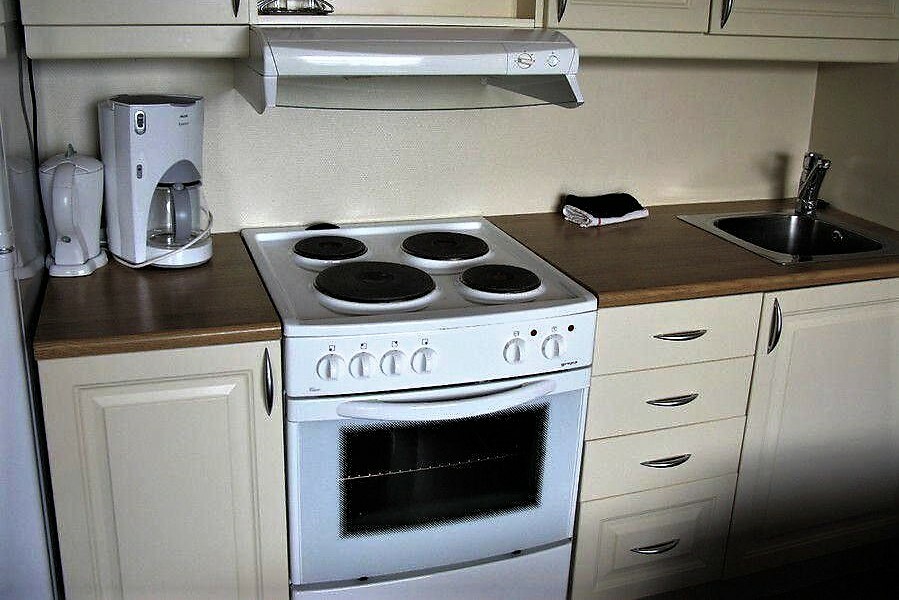
The place for the stove is chosen taking into account the rule of the "working triangle": when it, the refrigerator and the sink are in a common area, at a relatively small distance from each other
Taking into account safety requirements, the base under the slab must be strong and stable. There is no need to take any separate measures for thermal insulation or wall protection - modern devices are maximally protected from various risks.
If your new apartment already has a power outlet, try to keep the stove as close to it as possible. Short wires and the absence of extension cords are also one of the safety conditions.
Step # 2 - calculations and work planning
It is better to plan all stages of work in advance in order to understand how long it will take to prepare. You may have to completely change the wiring, and at the same time make cosmetic repairs - you just have to start.

For convenience, make a list of what you need to buy - wires, circuit breaker, plug, socket, flexible wire. It is possible that you will need one thing or nothing at all, since everything is already there
In apartment buildings, it is forbidden to independently form or supplement electrical panels, therefore, to install a separate machine, agree in advance with an electrician from the service company. He will also tell you which device is better to buy.
Please note that the internal wiring installation - the process is long and laborious. You have to look for a special tool or hire workers to grind down the walls. All these nuances must be taken into account before starting work.
Further steps assume that the wiring is OK.
Step # 3 - installing a circuit breaker
Having bought a machine, first find the best place for it on the din-rail. It is more convenient to do this if you have a separate electrical panel that is not combined with the neighbors' shields, which is typical for old houses.

The cooker machine is usually included in the so-called "kitchen" group, which consists of protective devices for other powerful units - for example, a boiler. Low-power devices are usually connected to one line and fed to a common machine
If you still had to do the installation yourself, first of all, secure yourself - turn off the power supply.
After fixing the device to the DIN rail, fix the wires one by one. At first clean up supply phase conductor, bring it to the upper clamping terminal and press down with a screw. Be careful not to get the insulation caught in the clamp. Then fix the neutral conductor and earth on the respective busbars.
Step # 4 - if you need flexible wire
The simpler connection is hidden, when the power wire is directly connected to the terminals on the plate. But we will analyze a more complicated method, with the installation of a flexible wire with a plug, so that you can use the outlet and, if necessary, turn off the stove right in the kitchen.

The flexible wire is not included in the kit, as a direct, more secure connection is assumed. But both the power cord itself and the plug can be purchased at the store for a small amount.
Some manufacturers care about their customers, so they complete the devices with plugs and their connection diagrams.
Power plugs have a collapsible and understandable design. To connect the wires, first unscrew the fixing screws, remove the cover with pins-contacts, remove the fixing bar.
Find three terminals: ground is usually located at the top or bottom, and on the sides there are zero and ground. To understand how to distribute the wires, test the outlet into which you will insert the plug.
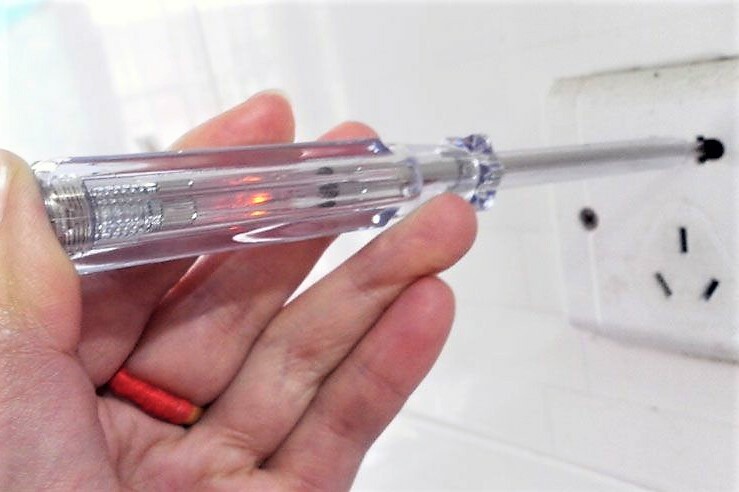
Testing is easiest to do with an indicator screwdriver. If it is placed in a hole with a neutral conductor, it will not react, and when connected to a phase, the indicator will light up
When connecting the wires to the terminals, you need to correlate the phase of the outlet with the phase of the plug so that when they are turned on, they coincide. When you find out, you can connect the conductors. Strip the insulation from the cable about 5 cm, insert it into the plug body.
Strip the conductors a couple of centimeters too. It is better to crimp the ends of stranded wires with ferrules. If this is not possible, you can twist and wrap around the contacts.
It remains to fix the wires in the corresponding terminals, and then replace the plug cover with pins. The wire for the stove is ready, it remains to fix it on the case.
Step # 5 - connecting wires according to the scheme
For the correct connection, we select the desired circuit. If you own a city apartment, you will need a circuit for a 1-phase network.
Where is the connection point for the wires? On the back wall of the stove there is a small niche closed with a lid. The rectangular metal cover is held by a few screws or a latch. Remove the cover, find the terminal blocks.
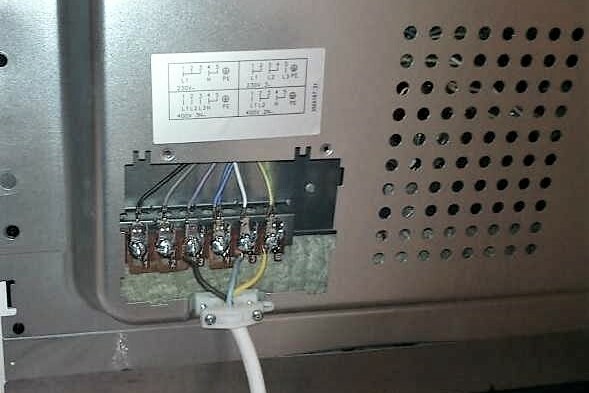
The connection point can also be found on the plate with diagrams for connecting conductors to the terminals. It is usually located above or to the side of the terminals. For some models, all diagrams are only in the installation instructions
We connect the terminals with jumpers according to the selected scheme, distribute the conductors of the flexible cord to the terminals, insert them into the clamps and twist them. If the wires are stranded, we recommend pre-crimping them with special terminal lugs. Simple twisting and winding is unprotected and dangerous.
The bolts need to be tightened tighter so that the contact is as tight as possible. This will protect the wires from accidental sparks and burns.
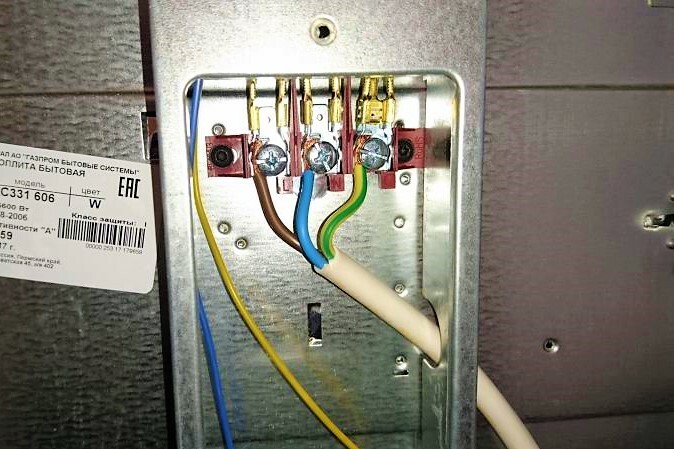
Try to observe the color coding when connecting the plug and the terminals of the plate. This will reduce the likelihood of confusion, in which, at best, the stove simply does not work, at worst, it will close.
After connecting all the conductors to the terminals, screw the cover into place, and fix the wire so that it does not dangle with a special clamp - a plastic device located next to it.
Step # 6 - testing for performance
Before turning on the machine, make sure that all connections are securely fastened. Then turn on the machine and the plug in the socket one by one. Try to use the auto-ignition. If the flame ignites, all connections are correct.
If the stove does not work, there is no contact somewhere. You will have to double-check all the connections, including the electrical panel, plug and terminals on the electric stove. The wires may be reversed or not all are connected.
We recommend that at the end of the work, if they are completed in full on their own, nevertheless, invite an electrician. You can start using the stove only after its professional approval - then you will be 100% sure that everything was done correctly.
Conclusions and useful video on the topic
Detailed instruction with explanations + soldering wires:
How to connect the plug to the wire correctly - clearly and comprehensively:
As you can see, connecting an electric stove has its own difficulties, but if you know the necessary information, you can do it yourself. Of course, the main help is technical documentation - connection diagrams and manufacturer's recommendations on the choice of devices.
You now have the knowledge that can come in handy when repairing or replacing equipment. Do not forget that to connect, it is imperative to check the characteristics of the wiring and install automatic protection.
If you know interesting and useful nuances of installing an electric stove - join the discussion below in the comments. Write what difficulties you encountered when connecting your model, what mistakes you managed to avoid.


